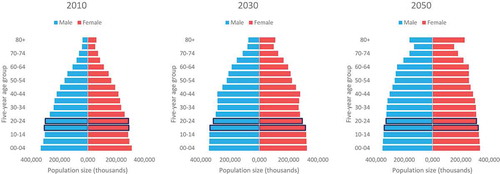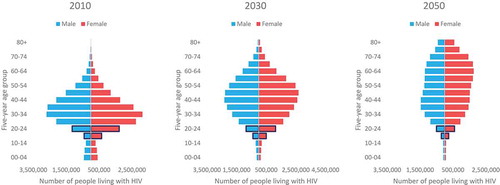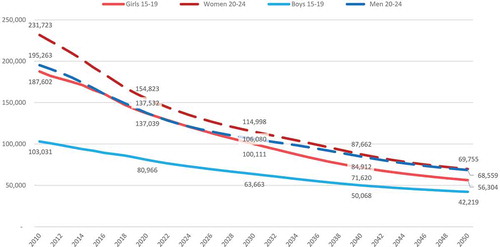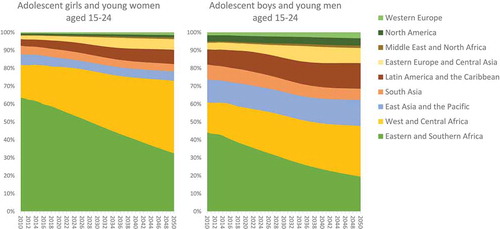Figures & data
Figure 1. Population size (thousands) by age and sex, 2010, 2030 and 2050, UNAIDS Citation2018 estimates.

Figure 2. Number of people living with HIV by age and sex, 2010, 2030 and 2050, UNAIDS Citation2018 estimates.

Table 1. Number of people living with HIV by decade, region, age and sex, 2010–2050, UNAIDS Citation2018 estimates.
Figure 3. Number of new HIV infections among adolescent and young people, by sex and five-year age group, 2010–2050, UNAIDS Citation2018 estimates.

Table 2. Number of new HIV infections by decade, region, age and sex, 2010–2050, UNAIDS Citation2018 estimates.
Figure 4. Percent distribution of new HIV infections among adolescents and young people by region, 2010–2050, UNAIDS Citation2018 estimates.

Data availability statement
The data that support the findings of this study are openly available in national HIV estimates files published through UNAIDS at http://www.unaids.org/en/dataanalysis/datatools/spectrum-epp.
